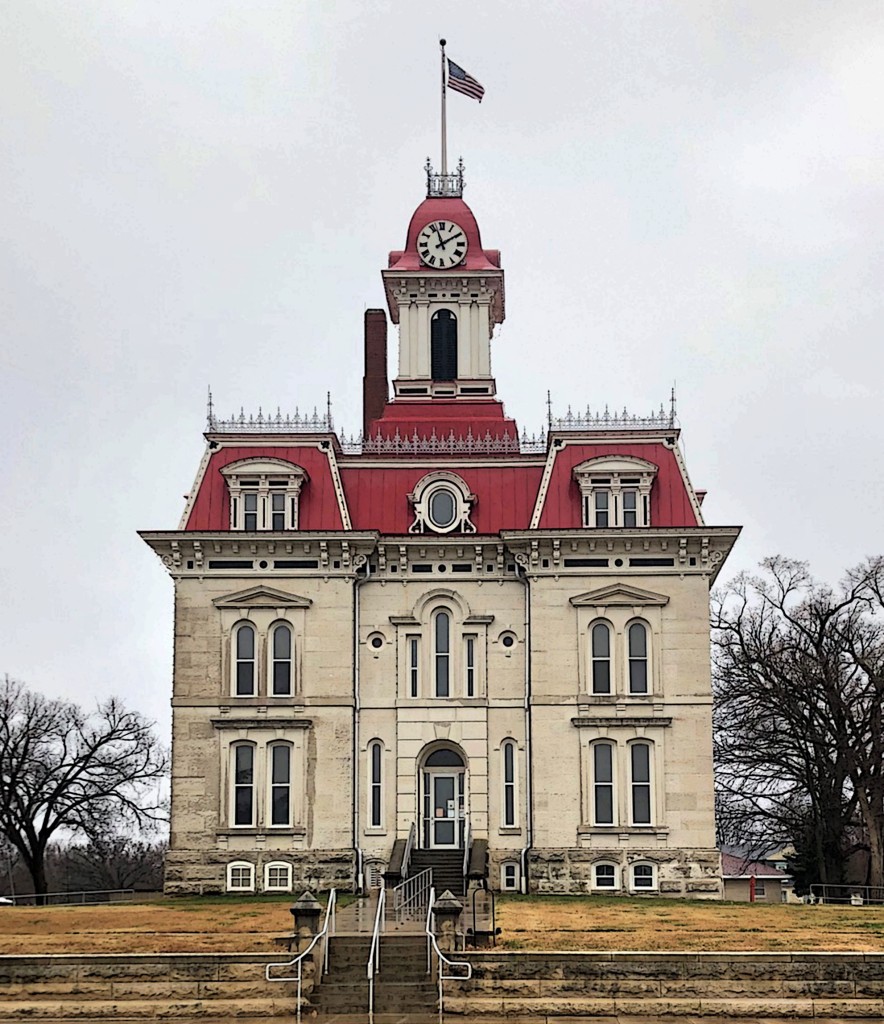“If you want something said, ask a man; if you want something done, ask a woman.” – Margaret Thatcher, the longest-serving British prime minister of the 20th century and the first woman to hold that office.
“Women belong in all places where decisions are being made.” – Ruth Bader Ginsburg, Associate Justice of the Supreme Court of the United States
“Women make the world a better place.” Common sense adage
My daughter thought the election of Kamala Harris as Vice-President a momentous event. She becomes the first woman to hold that office, the first African American woman and first South Asian woman. President-elect Joe Biden has added to that female tally by picking for his cabinet several woman firsts.
Kansas First Women Mayors
Most Kansas History Buffs have heard of Susanna Salter, first female mayor of Argonia, Kansas, from 1887-1888, thereby becoming the first woman elected to serve a political office in the United States. But have you heard the tale of Wilhelmina (Minnie) D. Morgan of Cottonwood Falls? How about Clarina Nichols at the Wyandotte Convention and Mary Lowman of Oskaloosa?
How many woman firsts can you name?
Minnie Morgan’s tale is set forth by Farrell Hoy Jenab, Minnie D. Morgan, Symphony in the Flint Hills Field Journal (2016). https://newprairiepress.org/sfh/2016/orientation/4.
1859
The story, according to Farrell, begins at the Wyandotte Convention in 1859, which is right and proper. “It began … with a group of women sitting, ‘unelected and uninvited, with their knitting in their hands,’ at the Wyandotte Constitutional Convention, hoping to encourage men to omit the word ‘male’ from the phrasing of the franchise clause.” Failing to get the right to suffrage, Kansas women went about their work – raising families, cooking, cleaning, plowing, reaping, bearing children, sometimes burying their children too soon.
[Unlike most of the women, Clarina Nichols, from Linn County, was invited and came as the official representative of the Moneka Woman’s Rights Association. She was then asked to address the delegates on issues relating to woman’s rights. Although she failed to convince the men to grant women suffrage she did succeed in securing equal rights for women to education, to custody of their children, and the right to vote in local school matters. In 1867, she helped to obtain passage of a married women’s property law.]
1889
It was 1889, the Women’s Temperance Union was active across Kansas. Carrie Nation was in Medicine Lodge, Minnie D. Morgan was in Cottonwood Falls.

As Jenab relates, the election on April 4, 1889 in Cottonwood Falls started off as a prank. The town’s “whiskey element” — men mad at women “meddling” to rid the town of saloons, bootlegging, and alcohol, circulated an all-female ticket as a joke. Susanna’s husband begged the now drunk joksters to call it off as it was embarrassing his wife. Surprised at first, Susanna, after short deliberation, embraced the ticket, disregarding the fact that she had four children to care for and one on the way. Elected she was paid the “princessly” sum of $1 a year.
Because, if you want something done, elect a woman. Besides, they had the Chase County Leader newspaper behind them as Minnie was married to the paper’s owner and editor.
Jenab reports:
“Mrs. W.D. Morgan received 105 votes while her male opponent, J.W. McWilliams, received 55 votes. Council members — Alice Hunt, Sadie Grisham, Elizabeth Porter, Barbara Gillett, and Elizabeth Johnson — won by even wider margins. And Police Judge Mrs. D.G. Groundwater defeated her opponent with 112 to 45 votes.”
The Chase County Ledger reported their administration as “practical and business-like.” The new court administering justice with “dignity and discretion.”
More First Women
Minnie Morgan’s victory was preceded by a similar women’s victory in Oskaloosa, Kansas. Mary D. (McGaha) Lowman, a school teacher became mayor along with an all woman city council. When she took office the city coffers were empty. Serving two terms, she replenished the coffers.
Way out west in Syracuse in Hamilton County, Syracuse on April 5, 1887, N. E. Wheeler was elected mayor; Caroline Johnson Barber, Mrs. W. A. Swartwood, Mrs. S. P. Nott, Mrs. Charles Coe, and Mrs. G. C. Riggles were elected members of the council; and J. D. Woodruff was elected police judge.
Add to this list the towns of Baldwin (Lucy Sullivan, mayor), Elk Falls, and Rossville, which in 1889, elected women to run their affairs. More would follow.
Wanting to add to this list, let’s include Joan Finney who served as the 42nd Governor of Kansas and First Female Governor from 1991 to 1995.
Nancy Landon Kassebaum Baker first female senator representing the State of Kansas in the United States Senate from 1978 to 1997.
Kay McFarland, first female chosen for the Kansas State Supreme Court, 1977, first female Chief Justice, 1995.
More Women in Kansas Elected Offices
Sources
Symphony in the Flint Hills Field Journal 2016 – Future of the Flint Hills, Minnie D. Morgan Minnie D. Morgan, by Farrell Hoy Jenab, 2016
Early Kansas Women in Politics, https://www.kshs.org/publicat/history/1986summer_gehring.pdf
Women in Elected State OfficesKansas, 1919-2019, by staff of the Reference Division, State Library of Kansas, Topeka, Kansas